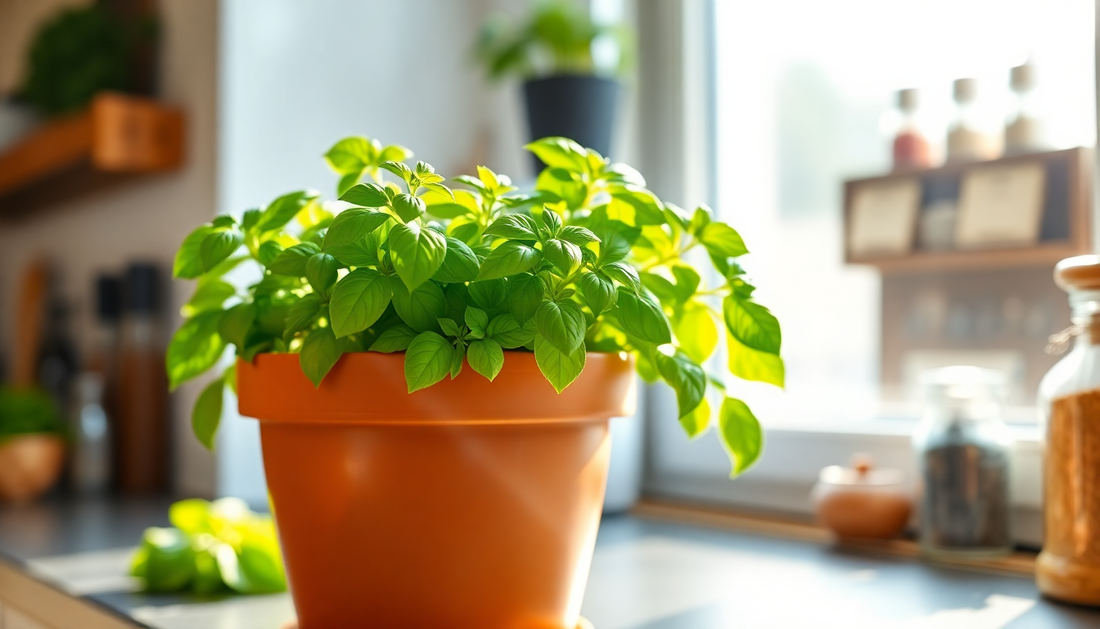
Mastering the Art of Indoor Basil Cultivation: A Comprehensive Guide
Share
Basil, the fragrant and versatile herb, has long been a staple in many kitchens around the world. Its vibrant green leaves and distinct aroma have the power to elevate any dish, from savory pasta sauces to refreshing summer salads. While basil is often associated with outdoor gardens, did you know that you can enjoy the benefits of this flavorful plant right in your own home? In this comprehensive guide, we'll explore the art of cultivating basil indoors, ensuring that you can savor the fresh, aromatic leaves year-round.
Choosing the Right Basil Variety
When it comes to growing basil indoors, not all varieties are created equal. Some varieties are better suited for indoor cultivation than others. Consider the following options:
Sweet Basil
This is the most common and widely recognized basil variety. With its large, broad leaves and classic flavor, sweet basil is an excellent choice for indoor growing. It thrives in bright, sunny conditions and can be a rewarding addition to your indoor herb garden.
Genovese Basil
Originating from the Genoa region of Italy, Genovese basil is known for its robust flavor and tender leaves. This variety is particularly well-suited for indoor cultivation, as it can adapt to the lower light conditions often found in homes.
Dwarf or Compact Basil
These smaller, bushy varieties of basil are ideal for growing in containers or on windowsills. They require less space and can be a great option for those with limited indoor gardening areas.
Selecting the Right Pot and Soil
When it comes to growing basil indoors, the choice of pot and soil is crucial. Here are some tips to ensure your basil thrives:
Pot Size
Choose a pot that is at least 6 inches wide and 6 inches deep. Basil has a relatively shallow root system, but it still needs enough space to grow and flourish.
Pot Material
Opt for a pot made of terracotta, ceramic, or plastic. These materials allow for proper drainage and air circulation, which are essential for healthy basil plants.
Soil
Use a well-draining, nutrient-rich potting mix specifically formulated for herbs. Avoid using regular garden soil, as it may be too dense and heavy for indoor basil cultivation.
Providing the Ideal Growing Conditions
Basil is a warm-weather plant, and recreating its preferred growing conditions indoors is key to success. Here's what you need to know:
Sunlight
Basil thrives in full sun, requiring at least 6 hours of direct sunlight per day. Place your basil plant in a south-facing window or consider using a grow light to supplement the natural light.
Temperature
Basil prefers warm temperatures, typically between 70°F and 85°F (21°C to 29°C). Avoid exposing your plant to cold drafts or sudden temperature changes.
Humidity
Basil enjoys a humid environment. To increase the humidity around your plant, consider misting the leaves regularly or placing the pot on a tray filled with pebbles and water.
Watering
Basil requires consistent moisture, but it's important not to overwater. Water your plant when the top inch of soil becomes dry to the touch. Avoid letting the soil become waterlogged, as this can lead to root rot.
Pruning and Harvesting
Proper pruning and harvesting techniques are essential for maintaining a healthy, productive basil plant. Follow these guidelines:
Pruning
Regularly pinch or snip off the flower buds that appear at the top of the plant. This will encourage the plant to focus its energy on producing more leaves, rather than going to seed.
Harvesting
Begin harvesting your basil leaves when the plant is at least 6 inches tall. Snip the leaves just above a set of healthy, new leaves, leaving at least 2 sets of leaves on the plant. This will stimulate new growth and ensure a continuous supply of fresh basil.
Troubleshooting Common Issues
Even the most experienced indoor gardeners may encounter a few challenges when growing basil. Here are some common issues and how to address them:
Yellowing Leaves
Yellowing leaves can be a sign of overwatering, underwatering, or nutrient deficiency. Adjust your watering schedule and consider fertilizing your plant with a balanced, water-soluble fertilizer.
Wilting Leaves
Wilting leaves can indicate that the plant is not receiving enough water or is experiencing heat stress. Increase watering frequency and ensure the plant is not exposed to direct sunlight for too long.
Pests
Aphids, spider mites, and thrips are common pests that can affect indoor basil plants. Inspect your plant regularly and use a gentle, organic insecticidal soap or neem oil to address any infestations.
By following the tips and techniques outlined in this guide, you'll be well on your way to cultivating a thriving, fragrant basil plant right in your own home. Enjoy the fresh, flavorful leaves in your favorite recipes and savor the satisfaction of growing your own herbs. Happy gardening!
